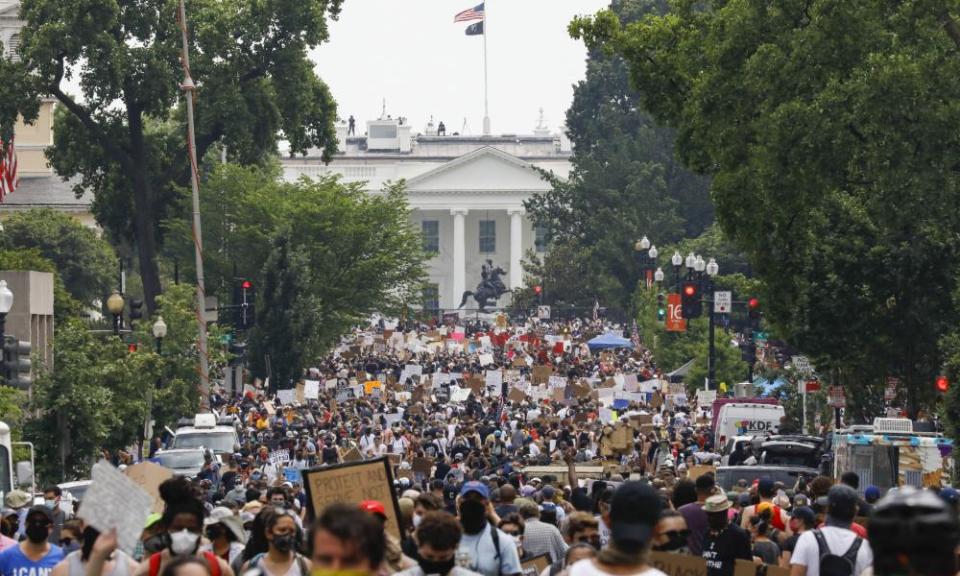Troops sent to DC during George Floyd protests had bayonets, top general says

The chairman of the joint chiefs of staff, Army Gen Mark Milley, confirmed that some US troops sent to Washington during protests over George Floyd’s police killing were issued with bayonets.
The Associated Press, which reported on the bayonets in June, also obtained documents revealing that some service members sent to the capital area in case they were ordered in to support law enforcement and National Guard in crowd control, did not have training in riot response.
In June, soldiers of the army’s 82nd airborne division from Fort Bragg, North Carolina, as well as the 3rd US infantry regiment, from Washington DC, were mobilized as demonstrators protested against police brutality and systemic racism, particularly affecting Black Americans.
After the troops arrived in outskirts of the nation’s capital, however, they were not sent to the demonstrations. While the soldiers were given bayonets, they were told that these implements were to stay in their sheaths, not affixed to their service rifles, Milley disclosed to two US congress members in a letter obtained by the AP.
These soldiers were also informed that no weapons were to enter Washington “without clear orders and only after non-lethal options were first reviewed”, Milley said.
In Milley’s 26 June letter, he claimed the order to mobilize these troops was from Army Maj Gen Omar Jones, who works as commander of the Washington DC military district.
Milley’s letter was sent to the congressmen Ted Lieu of California and Raja Krishnamoorthi of Illinois after both Democrats demanded an explanation following the AP’s report on bayonets.
Neither members of the 82nd airborne nor 3rd infantry regiment were called off-base into Washington DC, and paratroopers from the 82nd airborne were sent back to North Carolina on 4 June.
A document obtained by the news organization also revealed that some military members “were not prepared” especially for dealing with demonstrators, and that commanders planned on giving them training within four days of their arrival.
While service members with bayonets were not called off-base, the military’s presence during unrest spurred extensive outrage.
Law enforcement agents violently ousted peaceful protesters from Lafayette Square next to the White House so that Donald Trump and an entourage that included Milley and the defense secretary, Mark Esper, could have a photo op in front of St John’s church, known as the Church of the Presidents.
In a highly contentious escalation of tension and audacious stretch of presidential authority and use of the US military, Trump had threatened to deploy federal forces across the US and in defiance of any dissenting governors or mayor in order to quell civil unrest. He appeared to begin by demonstrating a swift scrambling of US soldiers to be poised outside the capital.
Related: Donald Trump threatens to deploy army as teargas fired so he can pose at church
Milley publicly apologized for participating in the photo op about one week later.
“I should not have been there,” Milley said in a pre-recorded video commencement address for National Defense University.
“My presence in that moment and in that environment created a perception of the military involved in domestic politics.”
On 29 June, a congressional committee heard testimony from witnesses of the Lafayette Square incident, including some who suffered injuries, USA Today reported.
Meanwhile, on 9 July, Esper and Milley are due to testify at a House armed services committee hearing on Department of Defense authorities and roles related to civilian law enforcement.
Esper has said he hadn’t known Trump was intending to hold a photo op.
It was another sign of strain between Trump and the military, a relationship he has championed, soon followed by the reports that Russia had put a bounty on US military heads in Afghanistan.

